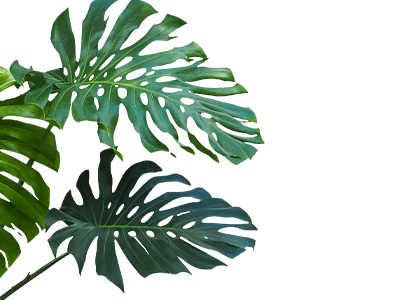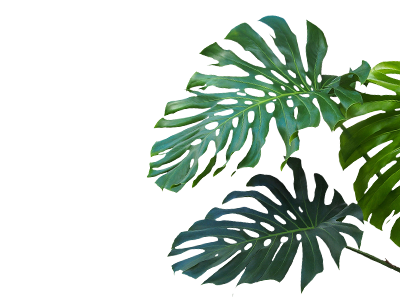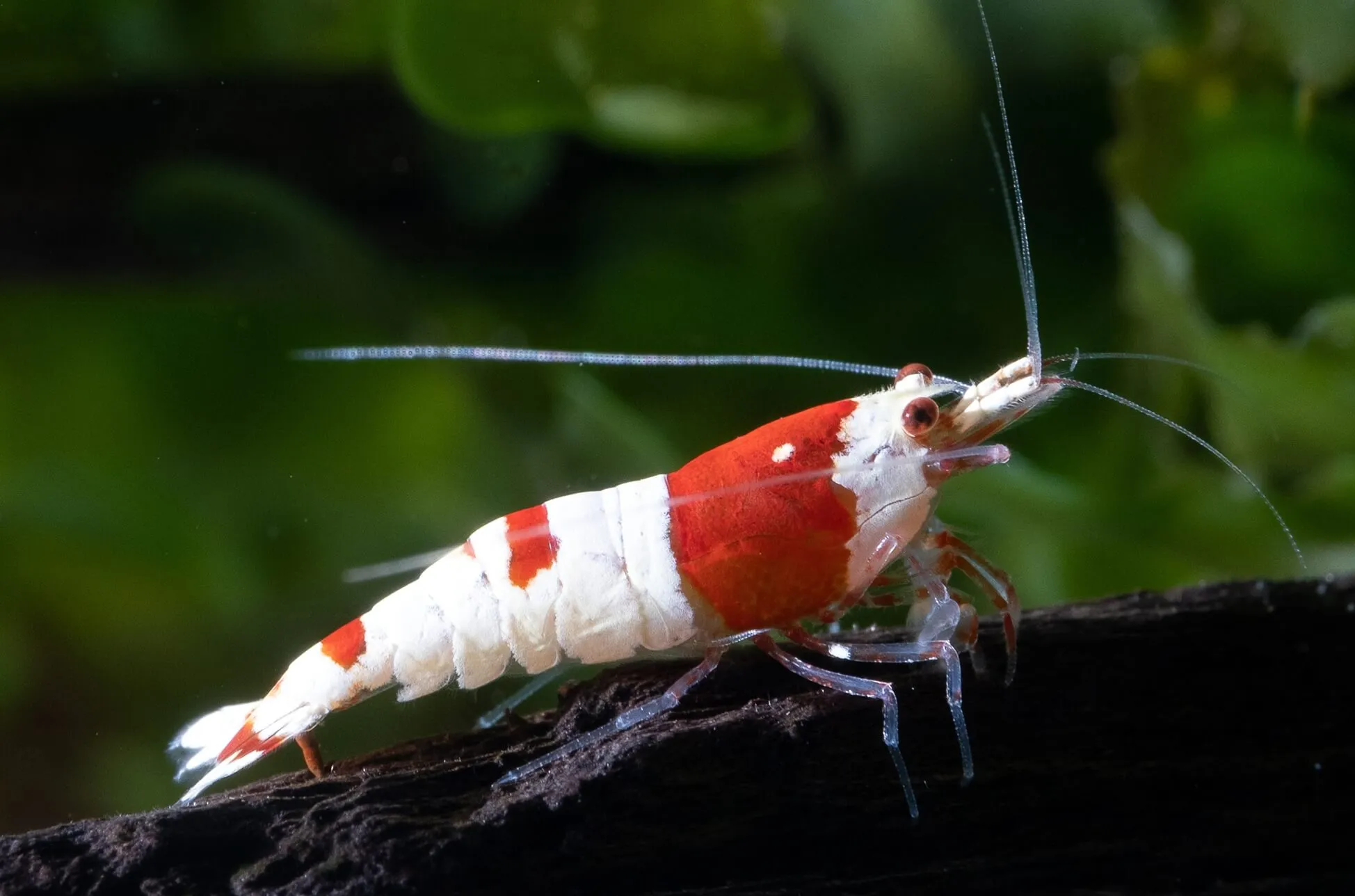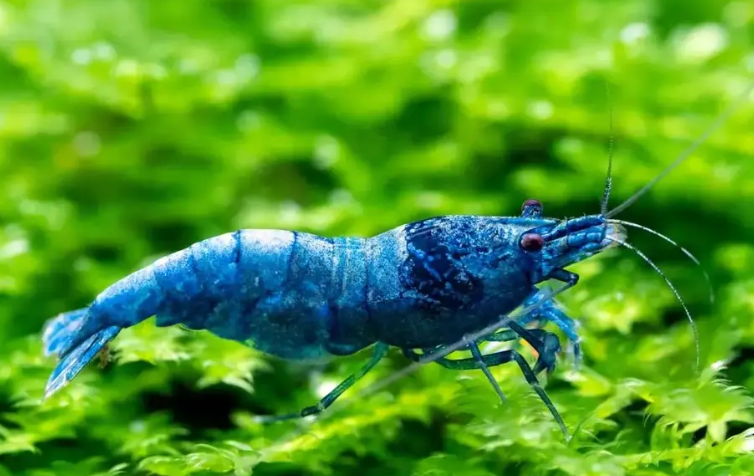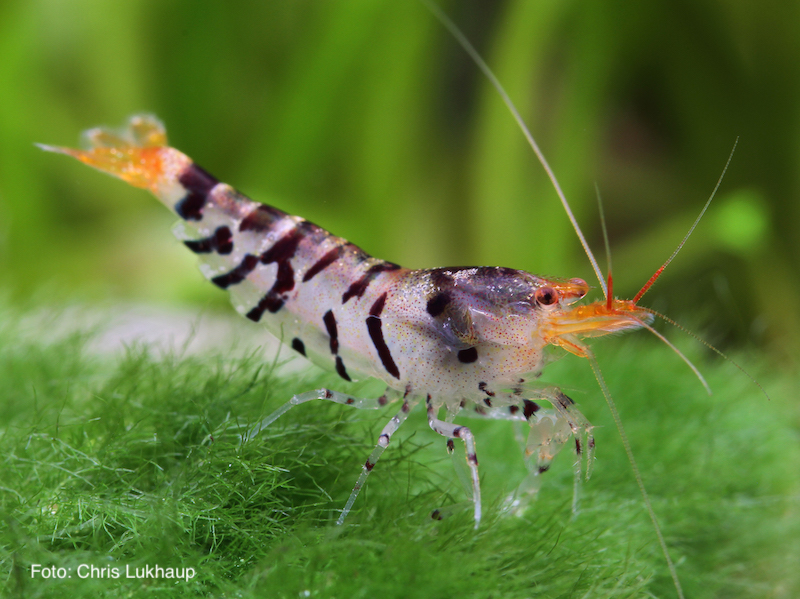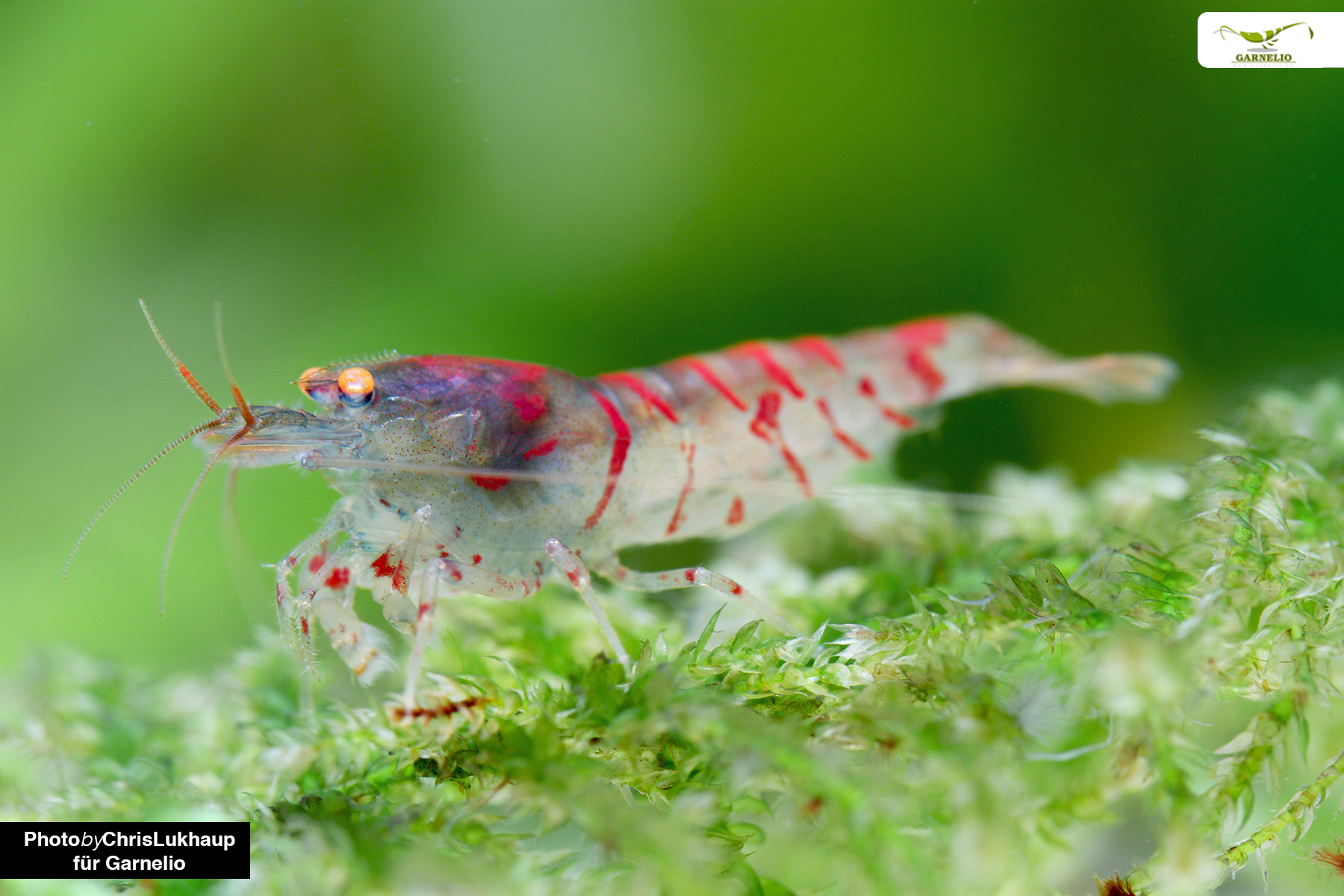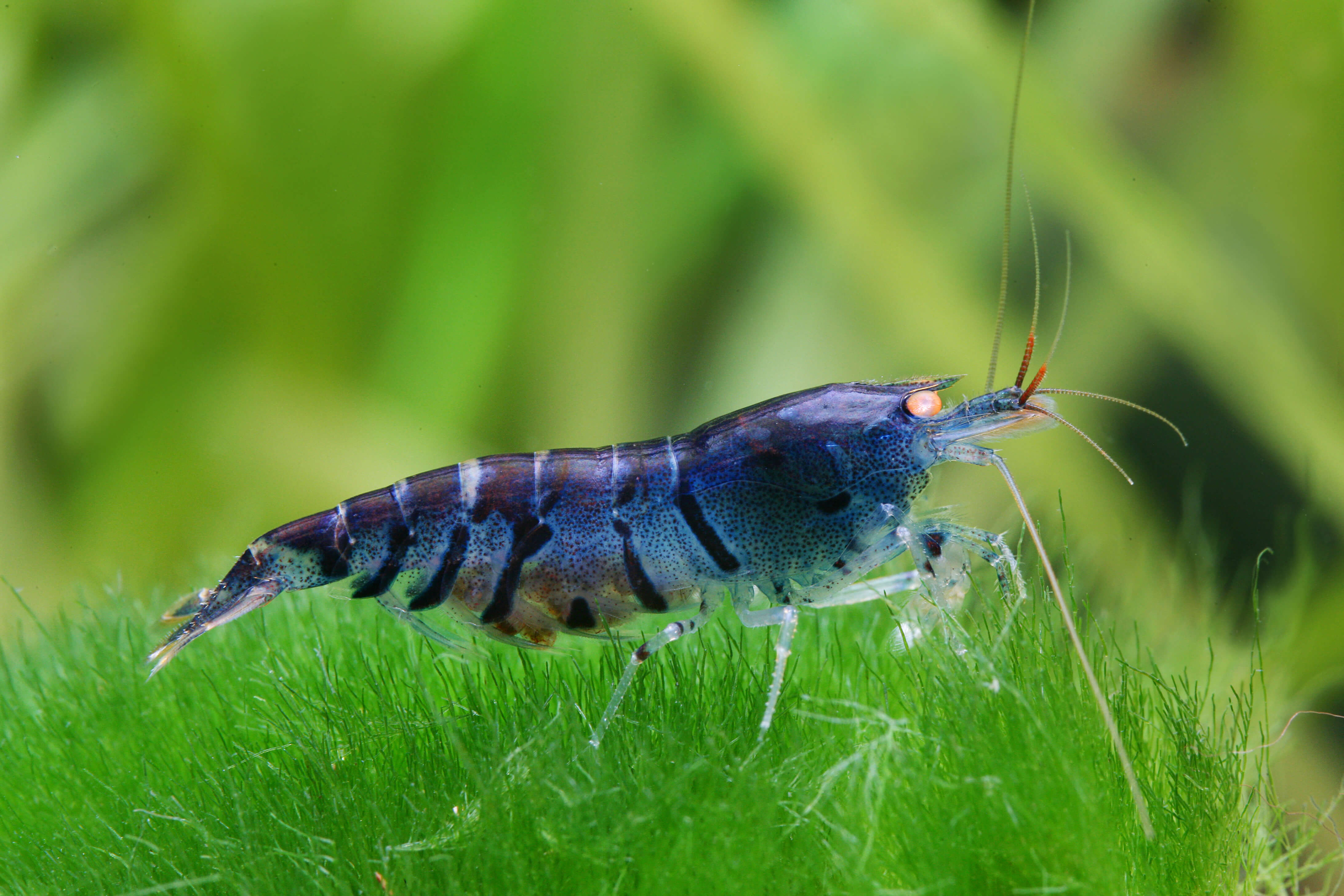
Caridina Shrimp


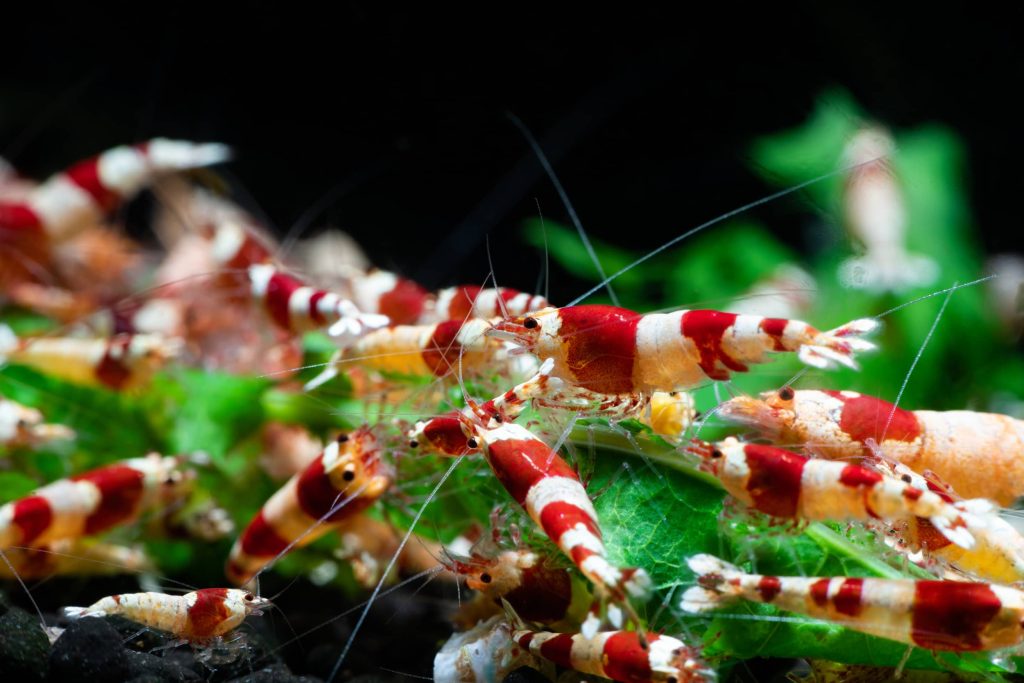
Caridina Shrimp
Dutch Name: Caridina Shrimp
Scientific name: Caridina cf. cantonensis
Origin: Taiwan
Age: Average 18 months
Height: about 2 – 3 cm, females grow larger than males
Legislation: None
Difficulty: Medium to difficult
Group: Shrimp are group animals - minimum group of 10 shrimp
Diet: Omnivore – Dry Food, Leaves and Vegetables
Reproduction: Females carry the eggs - gestation lasts 30 to 45 days



Description
Caridina shrimps are known for their beautiful colors and are often considered the more extravagant variety compared to Neocaridina shrimps. With intense colors and complex patterns, these shrimp are a feast for the eyes.
However, the splendor of Caridina shrimp also comes with greater responsibility, as they require more demanding care and attention. To stay in optimal condition, Caridina shrimp have specific requirements with regard to both the water values and the design of their living environment. Originally, Caridina shrimps are found in Asia, mainly in small watercourses and caves. The water in which they naturally live consists mainly of rainwater. As a result, they have these specific requirements regarding the water values, since rainwater differs significantly from our tap water.
Tap water is not sufficient to achieve the ideal water values. Tap water usually has a higher pH, KH, GH and conductivity than the values Caridina shrimp need. Fortunately, solutions are available, such as the use of osmosis water, pH-lowering soil substrates and mineral salts, that allow you to adjust these water parameters. Using these methods you can create the ideal environment for keeping Caridina shrimp.
Despite these requirements, Caridina are really beautiful shrimp to keep! They are active and peaceful animals that actively swim around in your aquarium and are busy looking for food all day long. They are hard workers and excellent cleaners. They feed on algae and organic matter, so they play a natural role in keeping the aquarium clean. Observing their lively behavior, intense colors and diverse patterns is a fun hobby that can quickly get out of hand.

Water values
Caridina shrimp have specific requirements to maintain optimal health and well-being. It is important to understand that these beautiful shrimp need a carefully curated habitat to thrive. For example, they set specific requirements for the water values, such as the pH value, the hardness and the temperature of the water.
Minimum size: 15 to 20 liter aquarium
Temperature: 18 to 28 degrees - preferably around 22 degrees
PH value: 6 to 7
GH Value: 5 – 6
KH: As close to 0 as possible
N02: 0
Conductivity: 200-300ms
Equipment: Lots of plants, mosses and wood
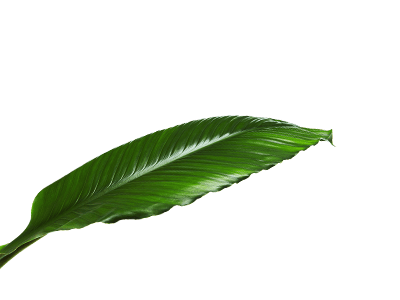

There are several methods available to achieve the correct water values for Caridina shrimp. One option is to use rainwater or osmosis water, because these water sources have a different composition than tap water. By combining rainwater or osmosis water with a pH-lowering soil, you can more easily achieve the desired pH value and keep it stable.
Measuring the water values is essential and can be done using electric meters or drop tests. Electric meters provide real-time information on key parameters such as pH, gH, kH and conductivity, while drop tests can be performed at home and provide valuable information on the condition of the aquarium water.


Nutrition
A balanced and appropriate diet is of great importance for the health and well-being of Caridina shrimp. These beautiful shrimp are omnivores and need a varied diet to stay in optimal condition. Although they mainly consume plant foods, it is important to meet their nutritional needs.
Caridina shrimp's diet can consist of a variety of nutrients, including algae, dead plant debris, and special shrimp feed. Algae is a natural food source for shrimp and can be obtained from algae on the plants in the aquarium or through algae wafers. Offering dead plant remains, such as dried leaves or pieces of vegetables, is also beneficial for their diet.
In addition to plant foods, Caridina shrimp also require protein-rich foods. This can be offered in the form of special shrimp feed that is fully balanced to contain all essential nutrients.
It is advisable to keep Caridina shrimp's diet varied and to feed it regularly. Providing a balanced diet allows shrimp to receive the necessary nutrients essential for healthy growth and reproduction. Observing the shrimp's feeding behavior can also provide valuable information about their health and well-being.

Interior nursery
When setting up a shrimp aquarium, it is very important to meet the natural needs of your Caridina shrimp as prey. Shrimp attach great importance to an environment with sufficient hiding places, as this creates a sense of security. Interestingly, you will be able to see more of your shrimp when they feel safe. Adding numerous hiding places to the aquarium is therefore essential.
When setting up a shrimp aquarium, it is therefore crucial to provide an environment in which shrimps feel safe and comfortable. Adding enough plants not only provides hiding places, but also contributes to a healthy ecosystem and provides shrimp with food sources. A well-appointed shrimp aquarium with lush vegetation provides shrimps with the ideal environment to thrive and enjoy a colorful and fascinating life


Aquarium Plants and Mosses
Plants play an essential role in your Caridina shrimp aquarium. They not only serve as important shelters, but also help create a healthy ecosystem. Plants play a vital role in maintaining optimal water quality by absorbing excess nutrients and reducing algae growth. They provide a stable environment and filter harmful substances from the water.
In addition, plants provide shrimp with the opportunity to find food and feed. They can feed on the algae and biofilm that grow on the plants. This natural food supply ensures a varied diet and contributes to the well-being of the shrimps.
Adding various types of plants, such as moss balls, floating plants and ground cover plants, ensures a varied landscape in the shrimp aquarium. This provides shrimp with different levels of hiding places and creates a visually appealing environment. The use of floating plants can also provide diffused light, which is beneficial for the well-being of the shrimp.
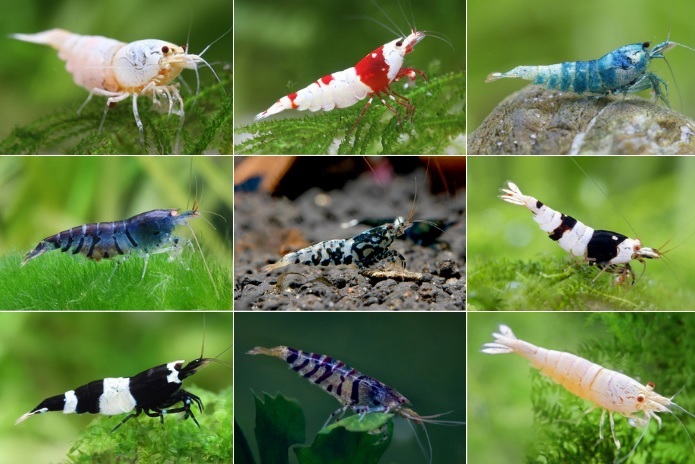
Colors
Caridina shrimp are known for their beautiful color variations, making them a visual spectacle in any aquarium. From vibrant red and white shades of the Crystal Red Shrimp, black and white colors of Crystal Black and the Tiger shrimp with various tiger-like patterns to colors and the new intense Taiwan Bee shrimp. There is a wide range of color variations available within the large group of Caridina shrimp.


Caridina shrimp, such as the Crystal shrimp, the tiger shrimp and the Taiwan Bee shrimp, can interbreed with each other. These crosses can also produce interesting hybrid shrimp, such as the Tibee shrimp which is a cross between a Tiger and Taiwan Bee.
Caridina shrimp also offer countless gradations and variations within a color variety. Take, for example, the Crystal Red and Crystal Black shrimp. Within this color variety you can find a wide range of quality gradations, varying from light to deeply colored specimens. With clearly visible white bands or that they are almost to completely white.
Growing with a specific color can therefore be extremely interesting, because you can discover the beautiful gradations and patterns that result from it. The pursuit of breeding the highest quality grades within a color variety keeps the hobby exciting and offers endless possibilities for creating beautiful Caridina Shrimp.


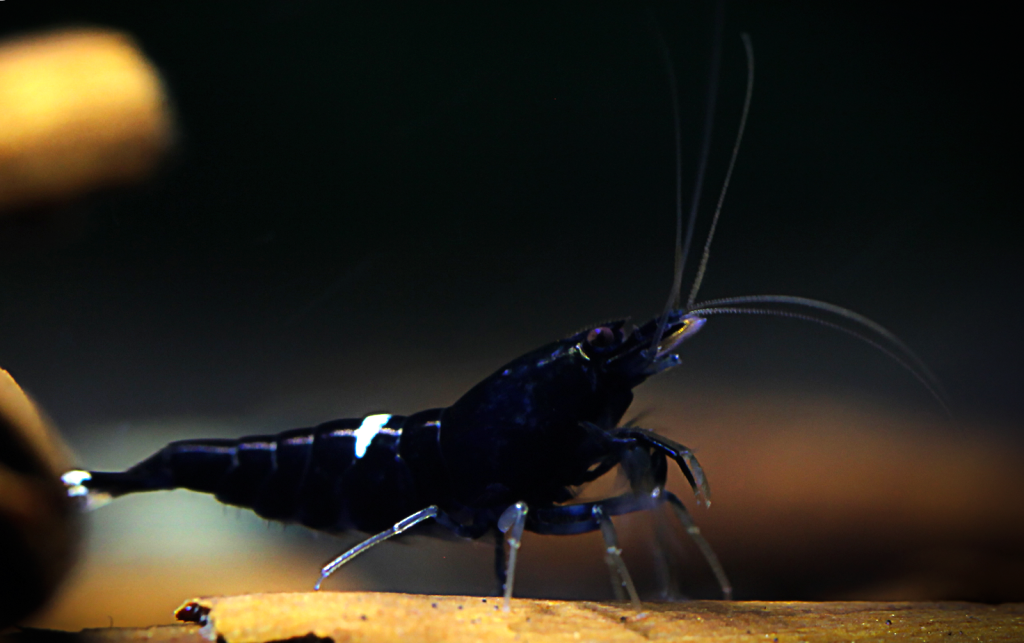
Taiwan Bee Shrimp
Taiwan Bee shrimp are a remarkable mutation of the Crystal shrimp. They are known for their even more intense colors and more striking coverage than the Crystal and Tiger shrimp. The origin of the Taiwan Bee shrimp is in Taiwan, where they were first bred by a Taiwanese breeder.
These new breeding varieties have been given unique names for their color varieties, such as the King Kong, Black Panda and the Incredible Hulk.
Keeping Taiwan Bee shrimp is a challenge because they require specific water parameters. Despite the complexity of caring for Taiwan Bee shrimp, they are becoming increasingly popular among shrimp enthusiasts due to their striking colors and unique appearance.
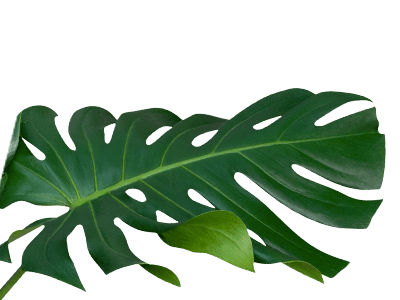

Reproduction
In the enchanting world of Caridina shrimp, the reproduction process can sometimes go at a breakneck pace! When the females are in the mood to mate, they release a seductive pheromone that the males find irresistible. So, if you suddenly see your shrimp swimming through the aquarium full of excitement and energy, it's most likely time for a real 'shrimp love dance'!
Caridina shrimp are ready to reproduce when they reach three to four months of age. The females ready to mate develop eggs which can be recognized by the visible egg spot on their necks. Do you want to know if a shrimp is pregnant? Then pay close attention to her belly, because a pregnant shrimp visibly carries all the eggs under her belly.
By the way, did you know that the color of the eggs indicates how long it takes for them to hatch? The darker the eggs, the faster they will hatch. So keep a close eye on the eggs, because soon you can expect a cute swarm of small shrimps in your aquarium!

